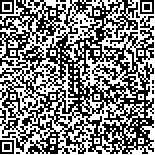下载中心
优秀审稿专家
优秀论文
相关链接
摘要

全球定位系统干涉反射测量(GPS-IR)是一种新的遥感技术,可用于估算近地表土壤水分含量。考虑到多卫星融合的优势和土壤湿度的时空尺度性,提出一种基于多星融合的土壤湿度最小二乘支持向量机(LS-SVM)滚动式估算模型。首先通过低阶多项式拟合分离GPS卫星直射和反射信号,进而建立反射信号正弦拟合模型,获取相对延迟相位。最后,通过线性回归模型有效分析和选取多卫星相对延迟相位,并建立基于多星融合的最小二乘支持向量机模型进行滚动式估算土壤湿度。以美国板块边界观测计划PBO提供的监测数据为例,对比分析利用单颗、多颗GPS卫星进行土壤湿度滚动式估算的可行性和有效性。经理论分析和两个测站实验表明:该模型充分发挥了LS-SVM的优势,有效综合了各卫星的性能,改善了采用单颗卫星进行土壤湿度估算时,其结果极易出现异常跳变的现象;模型只需较少的建模数据,采用滚动式能实现较长时间的估算,估算误差较为稳定;模型所估算的结果与土壤湿度实测值之间的相关系数R2以及均方根误差分别为0.942和0.962、0.072和0.032,相对于部分单一卫星至少提高了18.18%。因此,土壤湿度问题可作为非线性事件处理,采用多卫星融合估算是可行和有效的。
Soil moisture content is an important parameter in hydrology, meteorology, and agriculture and is vital for meteorological forecast, flood disaster, and water resource cycle. Global positioning system interferometric reflectometry is a new remote sensing technique with low cost and high efficiency and resolution. This technique can be used to estimate near-surface soil moisture for the area surrounding the antenna from signal-to-noise ratio (SNR) data.
In this study, a non-linear sliding estimation method of soil moisture based on multi-satellite fusion was proposed in consideration of the advantages of multi-satellite convergence and the time and space scale of soil moisture. First, the direct and reflection signals of GPS satellites were separated by means of low-order polynomial fitting. Then, the sinusoidal fitting model of reflection signals was established, and the relative delay phase of the SNR interferogram was obtained. Finally, a linear regression model was used to analyze and select the phase of SNR interferogram, and the sliding estimation method of the soil moisture using the least square support vector machine based on multi-system fusion was established. On the basis of the monitoring data provided by US Plate Boundary Observations Project, the feasibility and effectiveness of using single and multiple GPS satellites for sliding estimation of soil moisture were compared and analyzed.
Results of the two types of data showed that the linear regression equation could efficiently describe the relationship between relative retardation phase and soil moisture and effectively select GPS satellites by setting the threshold range of correlation coefficient. The optimal parameters of least square support vector machine were selected by grid search method. Over-fitting did not occur in the process of multi-star fusion inversion, and the advantage of non-linear weight determination was fully exerted. When a single satellite was used for soil moisture inversion, the variation law of soil moisture was inaccurately obtained, and the error of inversion error fluctuated greatly, thereby resulting in the jump phenomenon. When the rolling multi-star fusion inversion model was used, the fluctuation of inversion error was relatively close, thereby effectively suppressing the transition phenomenon. The correlation coefficients between the estimated results and the measured values of soil moisture were 0.942 and 0.962, respectively. The root mean square errors were 0.072 and 0.032, which were at least 18.18% higher than those of some single satellites.
The theoretical analysis and experiment showed that this method had fully utilized the advantages of least square support vector machine and effectively integrated the performance of each satellite. Overall, the method required less modeling data, the sliding mode could achieve long time estimation, and the estimation error was relatively stable. This method not only ensured the stability of the local error in the estimation process but also effectively restrained the abnormal jump phenomenon easily when single satellite was estimated. The inversion process was not easily affected by a single satellite. Therefore, the estimation of soil humidity can be treated as non-linear event, and multi-system fusion estimation is feasible and effective.

